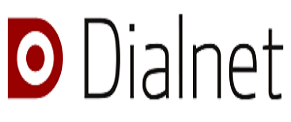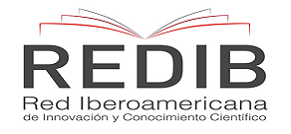Effect of anaerobic and aerobic exercises using organic nutritional supplements on the lactic threshold, energy expended during effort and endurance performance in handball players
Keywords:
Energy Systems, Lactic Aerobic, Organic Food Supplement, Lactate Threshold, Handball PlayersAbstract
The aim of this study was to identify the extent to which energy systems (anaerobic or aerobic) contribute to the development of lactate threshold, energy expenditure during effort, and endurance performance, when using organic nutritional supplements for handball players. An experimental design with two equal experimental groups was utilized. A sample of 14 players of the Karbala Youth Club in Karbala Governorate was randomly and equally divided into two experimental groups, with 7 players in each group. The first group did lactic energy system exercises, using organic nutritional supplements (curcumin and ginseng), while the second group did aerobic energy system exercises using the same organic supplements. Exercising in both the lactic and aerobic energy systems while using organic nutritional supplements had a positive effect on the development of the lactate threshold, energy expenditure during effort, and endurance performance of young handball players (p<0.05). Training with the anaerobic energy system yielded better results than with the aerobic energy system in the development of the lactate threshold, energy expenditure during effort, and endurance performance of young handball players (p<0.05). The use of organic nutritional supplements played an important role in the development of the lactate threshold, energy expenditure during effort, and endurance performance of young handball players.
Downloads
References
Abdul-Jabbar, R. (2001). Training according to the first and third areas of physical exertion and their impact on developing performance tolerance, some immune proteins, and interleukin concentration for young basketball players [Master’s thesis, Al Qadisiyah University].
Abu El-Ela Ahmed, A. (1997). Sports Training Physiological Foundations. Dar Al-Fikr Al Arabi, Cairo.
Al-Hindawi, M. (2011). The effects of the difference in environment temperature on the energy of exercise. University of Jordan, College of Physical Education.
Allawi, M. H., & Abdel-Fattah, A. A. (1984). Physiology of Sports Training. Dar Al-Fikr Al Arabi, Cairo.
Al-Maliki, F. M. (2013). Nutrition and Sports Activity (Nutritional Supplements, Natural Herbs, Steroids). Arab Society for Printing, Jordan.
Bean, A. (2004). Muscle Building and Strength Training Exercises. Dar Al-Farouk, Cairo.
Darwish, K., Abbas, E. E., & Ali, S. M. (1998). Physiological foundations of handball training (theories – applications). Al-Kitab Center for Publishing, Cairo.
Hammad, M. I. (1988). Modern Sports Training, Planning, Application, Leadership. Arab Thought House, Cairo.
Hassan, M. M. & Mosleh, O. (2002). The Physiology of Sports. Dar Al-Fikr Al-Arabi, Cairo.
Humphreys, J. D. (2001). North American ginseng and the stress response during acute exercise [Master’s thesis, University of Alberta, Canada].
Huwaiber, K. H. (2016). The effect of lactate interval training and the lactate threshold according to the stress areas in developing some physiological variables and the performance of the compound offensive skills of young basketball players. [Master’s thesis, University of Karbala, College of Physical Education and Sports Sciences, Iraq].
Manati, H. (2015). The effect of a training program using ginseng on some variables of refereeing performance in basketball [PhD thesis, College of Physical Education for Girls, Egypt].
Nassif, A. (1987). Kinetic Learning. Mosul University Press.
Oreibi, A. (1998). Handball and its Basic Elements. Al-Fath University Publications, Tripoli.
Pengelly Tomy, A. (2011). Panax quinefl American Ginseng. Appalachian Center for Ethnobotanical Studies, Miami.
Wilmore, J. H. (1978). Athletic training and physical fitness. Boston.
Zaki, A. M., & Muhammad, T. (2002). Swimming (technic, education, training, rescue). Arab Thought House, Cairo.
Downloads
Published
How to Cite
Issue
Section
License
Copyright and Licensing
For all articles published in Atena Journals, copyright is retained by the authors. Articles are licensed under an open access Creative Commons CC BY 4.0 license, meaning that anyone may download and read the paper for free. In addition, the article may be reused and quoted provided that the original published version is cited. These conditions allow for maximum use and exposure of the work, while ensuring that the authors receive proper credit.
Reproducing Published Material from other Publishers
It is absolutely essential that authors obtain permission to reproduce any published material (figures, schemes, tables or any extract of a text) which does not fall into the public domain, or for which they do not hold the copyright. Permission should be requested by the authors from the copyrightholder (usually the Publisher, please refer to the imprint of the individual publications to identify the copyrightholder).
Permission is required for:
- Your own works published by other Publishers and for which you did not retain copyright.
- Substantial extracts from anyones' works or a series of works.
- Use of Tables, Graphs, Charts, Schemes and Artworks if they are unaltered or slightly modified.
- Photographs for which you do not hold copyright.
Permission is not required for:
- Reconstruction of your own table with data already published elsewhere. Please notice that in this case you must cite the source of the data in the form of either "Data from..." or "Adapted from...".
- Reasonably short quotes are considered fair use and therefore do not require permission.
- Graphs, Charts, Schemes and Artworks that are completely redrawn by the authors and significantly changed beyond recognition do not require permission.
Obtaining Permission
In order to avoid unnecessary delays in the publication process, you should start obtaining permissions as early as possible. If in any doubt about the copyright, apply for permission. Atena Journals cannot publish material from other publications without permission.
The copyright holder may give you instructions on the form of acknowledgement to be followed; otherwise follow the style: "Reproduced with permission from [author], [book/journal title]; published by [publisher], [year].' at the end of the caption of the Table, Figure or Scheme.














